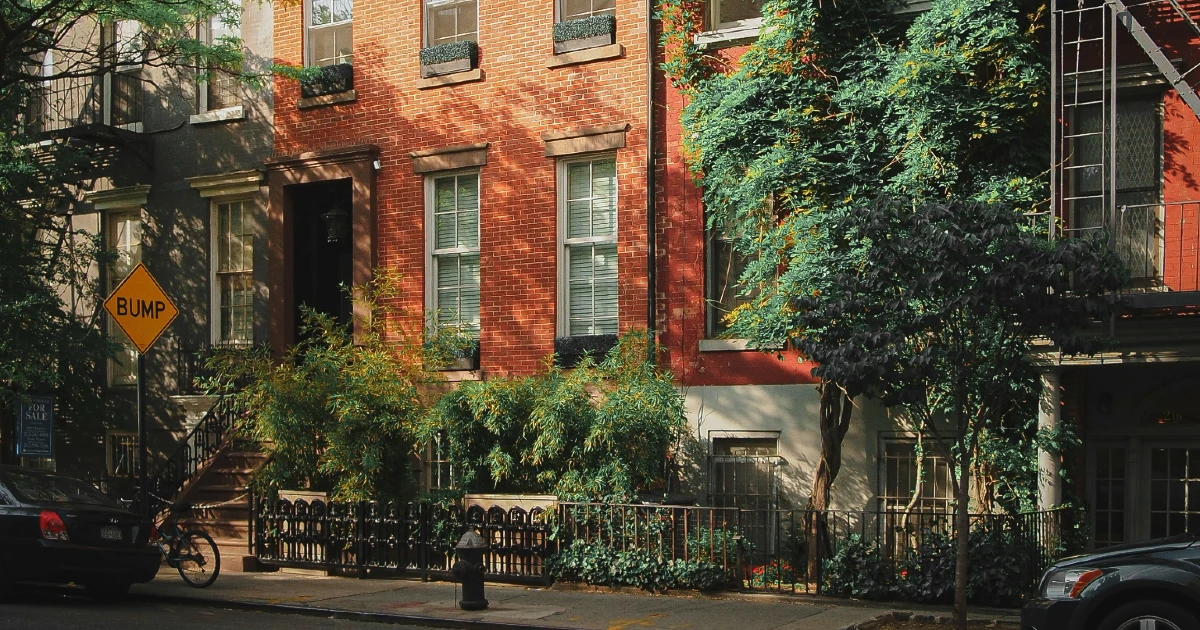Austin Housing Market Overview
The Austin housing market in 2025 presents a nuanced landscape. As of the latest data from early 2025, median sale prices have seen fluctuations. The noteworthy trend of a decrease in average home values reflects a shift from the prior year's dynamics. Specifically, as of November 2024, the average home value in the Austin-Round Rock area stood at $461,700, marking a 9.2% decrease from the preceding year.
In contrast, the median sale price, recorded at $476,800 in Q3 2025, had increased by 3.4% year-over-year according to Redfin data. This variance in home values and median sale prices signals a more complex environment for buyers and sellers alike.
In November 2024, the average home value stood at $461,700, reflecting a year-over-year change of -9.2%, indicating a decrease in property values compared to the previous year. Additionally, in January 2023, the median sale price was $530,000, showing a year-over-year change of -5.4%. These figures highlight a trend of declining home values during the specified periods, suggesting a market where property prices have decreased compared to the same times in the previous year.
The housing market conditions have shifted towards neutrality. Analysis from RocketHomes suggests a 21.3% increase in homes for sale in February 2025 compared to the previous month. This inventory change may impact median sales prices and market balance.
Austin's real estate has been influenced by various factors, including a cooling off from previous highs. Prospective buyers and investors should pay attention to nuanced developments, as the city still holds a strong appeal due to its vibrant cultural scene and booming tech industry, which continues to attract a diverse set of residents.
Market Analysis and Trends in Austin
The Austin real estate sector is witnessing nuanced dynamics with discernible trends in home prices and sales volume. Despite fluctuations, the market demonstrates a robust identity.
Market Dynamics
The Austin housing market is currently characterized by a set of complex factors influencing both demand and supply. With the city's popularity growing among tech companies and professionals, the influx of new residents has fueled demand. However, capacity constraints and zoning regulations pose challenges to new construction, thus impacting overall market dynamics.
Price Trends
Recent figures indicate a price drop in home values, which is a shift from the previously heated market conditions. For instance, the median home value has seen a 9.2% decrease from the previous year. This correction aligns with broader national trends but Austin's prices had notably outpaced many other cities during the prior boom.
Sales Volume
Sales volumes in the Austin area are reflecting the cooling price trends, with slower movement on the market. Properties are remaining listed for longer, with a decrease in bidding wars that were once commonplace. This change offers potential buyers more opportunities, but also indicates a cautious sentiment taking hold among both buyers and sellers.
Buying in Austin
When looking to purchase a home in Austin, potential buyers should be aware of current inventory levels, recognize the most sought-after neighborhoods, and understand the financial considerations involved in the market.
Inventory Levels
The Austin housing market has experienced fluctuations with inventory levels rising, a trend indicating a shift toward more availability for buyers. According to recent data, the total number of homes for sale in Austin, TX has increased to 4,376, a 14.6% increase compared to the previous year, reflecting a growing active listings pool.
Popular Neighborhoods
Buyers are showing continued interest in neighborhoods like North Austin, where home prices have recently adjusted. The area's average home prices dropped by 30.6% in March 2023, providing a more affordable housing landscape for many. Other popular neighborhoods may have different price points and activity levels, each with its own unique market dynamics.
Homebuyer's Budget
The list price of homes in Austin remains a critical factor for buyers to consider. With the median home value previously noted at $461,700, buyers need to prepare their budget accordingly, accounting for potential competition that can drive list prices upwards. Both the homes sold and those still on the market present a range of options, from more modestly priced homes to high-value properties. Buyers should also factor in possible bidding wars, which could require a flexible budget strategy.
Selling in Austin
When selling real estate in Austin, understanding market trends, from new listings to homes sold, and the strategic leveraging of marketing is vital for sellers to navigate the transaction process and secure offers that meet or exceed their sale-to-list ratio expectations.
Listings and Transactions
In Austin, the number of new listings greatly influences the pulse of the local real estate market. Recent data has indicated a shift, with indicators such as homes selling at a varying pace compared to previous months. For instance, January saw a specific count of homes sold, which directly affects subsequent months’ inventory and market dynamics. These transactional patterns provide sellers with key data to help time their listing for optimal results.
Seller's Market Insights
The current market in Austin can be characterized as favoring sellers to some extent, with properties often receiving multiple offers. The sale-to-list ratio remains an important metric, as it indicates how close the selling price is to the listed price and can reflect the demand in Austin’s market. Sellers should be aware of these insights as it gives them leverage in negotiations and decisions around pricing strategies.
Marketing Strategies
A well-curated marketing strategy is essential for sellers in Austin's competitive environment. Highlighting a property’s unique selling points through various platforms can captivate potential buyers’ interest. In Austin, homes that are priced well and marketed effectively tend to attract multiple offers, which can lead to a more favorable sale-to-list ratio. Implementing a diverse range of marketing strategies, from online listings to virtual tours, provides sellers with a robust toolkit to facilitate a successful sale.
Local Economic Indicators in Austin
The Austin economy showcases a resilient job market and population growth despite fluctuations in the cost of living. These factors are pivotal in shaping the real estate landscape.
Job and Population Growth
The Austin Business-Cycle Index reflects a city thriving with strong payroll gains, indicating a robust job market. The continuous allure for new residents, particularly in the tech industry, has propelled population growth, placing Austin amongst the fastest-growing cities in the United States.
Unemployment Rate: Austin maintains an impressive employment scene, with recent reports suggesting lower unemployment rates than national averages, reinforcing the strength of the local economy.
Cost of Living Analysis
Although Austin is an economic hub with a high influx of new residents, the cost of living has been on the rise. Housing costs, as highlighted in the Norada Real Estate report, show a significant increase in average home values despite a recent dip, which signals the city's substantial cost of living when juxtaposed with the national index.
Living Expenses: Items such as groceries, utilities, and transportation also contribute to the overall cost of living, which remains relatively high in Austin. The balance between the cost of living and the quality of life often informs potential new residents' decisions when relocating to Austin.
Real Estate Market Comparisons in Austin
The Austin housing market exhibits unique trends when compared to the state of Texas and the national market, as well as distinct patterns in comparison with other major cities like Phoenix and San Diego. These comparisons shed light on the city’s current economic standing and projected trajectory.
Texas and National Comparisons
The Texas housing market has experienced fluctuations, yet Austin's trends often stand out. In January 2024, Austin's home prices decreased by 3.0% compared to the previous year, with a median price standing at $509K. This contrasts with the overall Texas housing market, which saw varied price movements within the same period. Nationally, Austin's market dynamics, particularly in terms of price changes and days on market, differ notably from the broader trends.
Comparison With Other Cities
When drawing comparisons to other urban centers, Austin's real estate market reveals its competitive nature. For example, Austin's median home value contrasts with averages in cities like Phoenix and San Diego, where the markets have displayed different rates of appreciation and sales activity. Home values in Phoenix and San Diego have experienced variable trends, but as of late 2023, Austin's rate of decline in home prices was notably more modest than those seen in some other major cities.
Market Contributors and Influences in Austin
Several key factors are shaping the Austin real estate market, including prevailing interest rates, the involvement of various market players, and the influence of educational institutions. These determine the market dynamics that both buyers and sellers encounter.
Interest Rates and Financing
Interest rates are a critical lever in the Austin real estate economy. They greatly influence buyer demand and affordability. For instance, a report notes a correlation between the rise in mortgage applications and market momentum. This is likely because changes in interest rates can directly affect the cost of obtaining a mortgage. The involvement of financial institutions and the fluctuating rates impact how buyers and real estate agents navigate the market.
Fluctuations in interest rates have a notable impact on the real estate market. When interest rates rise, buyer activity often slows down as borrowing becomes more costly, affecting affordability and dampening demand. Conversely, decreases in interest rates tend to stimulate the market by reducing borrowing costs, making homeownership more accessible and potentially increasing buyer interest. These shifts in interest rates can significantly influence the pace and dynamics of the real estate market, shaping buyer behavior and overall market activity accordingly.
Educational institutions such as the University of Texas also play a role, albeit indirectly, in establishing market desirability. They potentially increase demand for housing as they attract faculty, staff, and students who require accommodation, thereby influencing the market.
Real Estate Market Players
Key players in the Austin real estate market include entities like Realtor.com, real estate agents, and the Austin Board of Realtors. These organizations and professionals provide market data, insights, and facilitate transactions that contribute to the vibrancy of the housing scene.
Real Estate Agents and Realtor Organizations play crucial roles in the real estate industry by providing valuable market trends and data to help buyers and sellers make informed decisions. They act as advocates for their clients, working to secure the most favorable terms and outcomes in transactions. These professionals leverage their expertise and knowledge of the market to guide clients through the complexities of buying and selling properties, ensuring a smooth and successful real estate experience while prioritizing their clients' interests and goals.
The Austin Board of Realtors is particularly significant as it is the local governing body overseeing market practice standards, providing resources, and ensuring compliance within the industry. Realtor.com is another influential player, offering a comprehensive online platform for listing and finding properties, significantly affecting how properties are marketed and sold.
The University of Texas significantly contributes to housing demand through its associated demographics, including students, faculty, and staff. The presence of the university fosters stability in housing demand, as these individuals often seek housing within close proximity to the campus. This consistent demand from university-related demographics plays a key role in shaping the local real estate market, influencing property values and rental trends around the University of Texas area.
Living in Austin
Austin, Texas, known as the "Live Music Capital of the World," offers an alluring blend of entertainment, culture, and outdoor activities. Its reputation for quality of life continues to attract new residents from all corners.
Lifestyle and Amenities
In Austin, residents enjoy a myriad of amenities that cater to diverse preferences. The city's vibrant live music scene is renowned, featuring countless venues that host an array of performances spanning various genres. A stable presence in the heart of Central Texas, Austin’s arts and culture offerings are nearly as abundant as its music. On any given night, one can experience everything from an indie band performance to a classical concert.
Outdoor enthusiasts thrive in Austin's temperate climate with hiking, biking, and running trails readily accessible throughout the city. For example, the Ann and Roy Butler Hike-and-Bike Trail offers picturesque routes along Lady Bird Lake, reflecting Austin's dedication to maintaining green spaces amidst urban development.
Housing and Community Development
The housing market in Austin reflects the city's continued growth and popularity. According to Zillow data, the average home value in the Austin-Round Rock area saw a decline, but this has not dissuaded interest in the local property market. Communities continue to develop, with a focus on sustainable living and access to local amenities. Data from Redfin indicates that despite fluctuations, housing supply is meeting demand as the city adapts to its growing population.
The development factors in the Lone Star State real estate market include housing supply meeting growing demand with sustainable designs, competitive pricing enhancing affordability, a high quality of life with access to amenities and outdoor spaces, and robust economic growth supporting a thriving real estate sector. These factors collectively contribute to the attractiveness and resilience of the real estate market in the region.
Austin’s community development initiatives aim to maintain a balance between growth and the preservation of the city's unique culture, ensuring that living in the heart of Texas continues to be an attractive proposition.
Frequently Asked Questions
This section addresses some common inquiries regarding the Austin real estate market, highlighting current and predicted trends, market conditions, and price dynamics.
What are the current trends in Austin home prices?
The current trends in Austin indicate a cooling off period, with average home prices dropping significantly since the previous year.
How is the Austin housing market forecasted to change by 2026?
Forecasts for the Austin housing market by 2026 suggest a continued adjustment, with potential for stabilization or modest fluctuations in prices depending on economic factors and supply-demand dynamics.
What are the long-term predictions for the Austin real estate market up to 2030?
Long-term predictions for the Austin real estate market up to 2030 point towards growth due to the city's strong economy and attractiveness to businesses and individuals, though the rate of growth may vary.
Is the Austin housing market showing signs of prices falling?
Yes, there are signs of prices falling, with some areas experiencing significant price drops and a general downward movement in median home prices.
Can we consider the current Austin market to be overpriced?
The term 'overpriced' is subjective, but current trends show a market correction from previous highs, indicating that prices may have been above sustainable levels.
What is the current state of the Austin housing market: buyer's or seller's market?
The current state of the Austin housing market is leaning towards a buyer's market, with increased inventory and homes remaining on the market for longer periods allowing for more negotiation room for buyers.






.png)
.jpg)
.jpg)


.png)